My friends at Redtree Art Gallery and Coffee Shop made a bee for my cappuccino.


My friends at Redtree Art Gallery and Coffee Shop made a bee for my cappuccino.

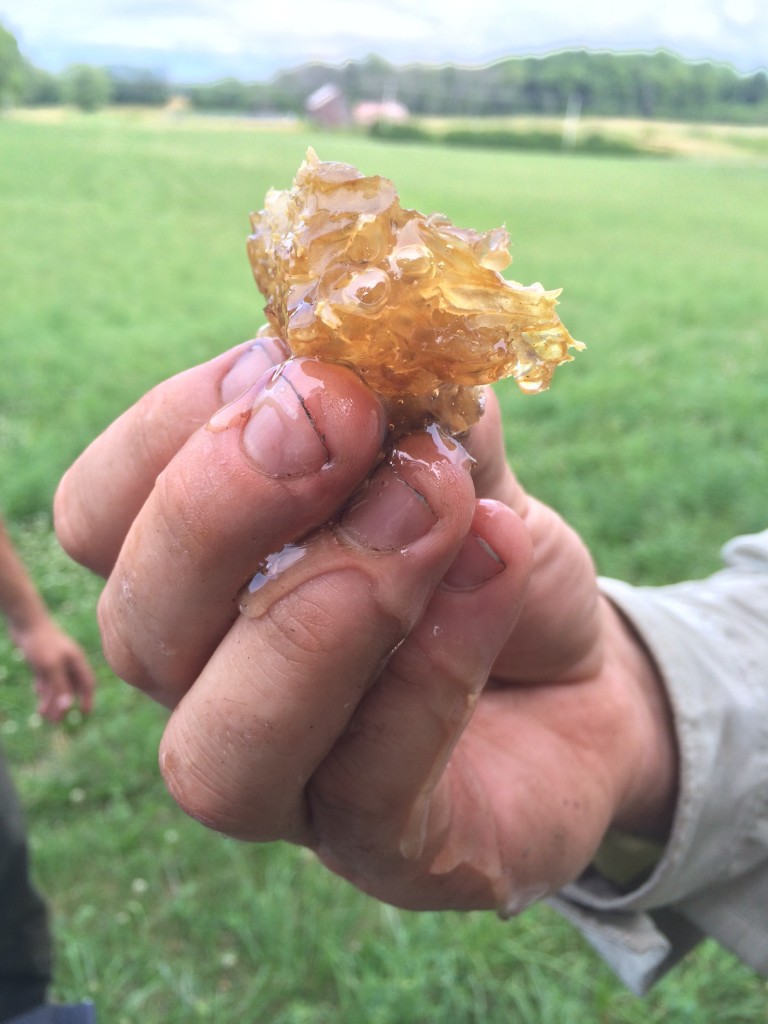
Reader, today is Easter, the day on which Christians celebrate the risen Christ. Today is also the day on which I will be making my soon-to-be-famous Ambrosia fruit salad to take to the Easter dinner. I shall provide images later.
But here’s what I want to tell you, and it has something to do with Easter. First, I should let you know that I was reared a very good Southern Baptist. My family was in Sunday School and church almost every Sunday. Which means I know my Bible and its stories quite well. Full disclosure: I have since moved on from my conservative Southern Baptist upbringing—from a church where the people are wonderful but whose theology excludes me—to a more open, more liberal church, and I don’t always show up on Sundays. I’m relaxing with it all. Which seems much healthier for me.
I tell you all of this because I have just discovered something in the Bible that I didn’t know until this Easter morning, and here it is: The gospel of Luke tells us that after Jesus arose from the dead—as the resurrected human Jesus interacted with his fellows—he ate a hunk of honeycomb.
Jesus appeared to his disciples, and in a move that I love because it shows me that he and I think a lot alike, Jesus asked if they had any food. That’s what I would do. Food is one big thing I love about being human. And what did the disciples offer him? Broiled fish and a hunk of honeycomb.
Now, some versions of the Bible omit the honeycomb. I don’t know why…I might explore that in another post. But a number of versions include the honeycomb. Look it up…Luke 24:42, 43. Look it up online so you have several versions to compare. The Bible says Jesus took what the disciples offered and he ate it. There you go: Christ arose and ate broiled fish and honeycomb.
Which is sort of exactly what the newly emerged bees do. First they eat pollen, which is a source of protein…like the fish…for muscle development; then, to fuel energy to those newly developed muscles, they eat honey. Which is what Jesus did. I know for a fact that he loved the honey in its comb more than the broiled fish. Which might be why the Biblical writers omitted it…perhaps to make Jesus appear all serious. I like to think of Jesus happy, so if I were writing this story, I would have kept the honeycomb.
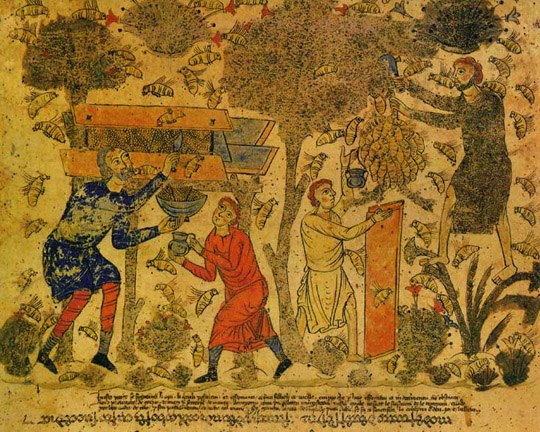

Dear Reader, it is Easter time, and in Ohio this means the beginning of bee season.
The colonies that successfully overwintered in my bee yards are bursting at the seams. Which suggests to me that swarm season may come earlier than usual this year…I usually expect my first swarm call on Mothers Day. It’s one of the most exciting calls of the year, and all my nerves are alert for it. Which is why I love this “Praise of the Bees” image. Because it is in every way full on glorious bee.
In this image, beekeepers smoke a swarm and cut the branch on which it hangs. This swarm will then become a happy hive in the beekeeper’s yard. Bees fly in the air, and it seems to me that they’re all over the blooming trees and shrubs and flowers. Another beekeeper cuts comb from a suspended long hive, honey runs through a sieve, and his assistant collects the small amount of honey in a jar. (I like that this is a sustainable practice. They are not taking more than the bees can give and not more than the beekeepers can use.)
For several months each year, I’m this busy. I’m deliriously, exhaustedly busy and I’m happy with that. And who wouldn’t be? It’s so freaking exciting.
So, friends, if you happen to find a swarm hanging sweetly in a tree or on a bush or on a lamp post or wherever, please contact me. I’ll be delighted collect it. I might look tired and dirty when I see you, but I will be happy. And I think it will make you happy, too.
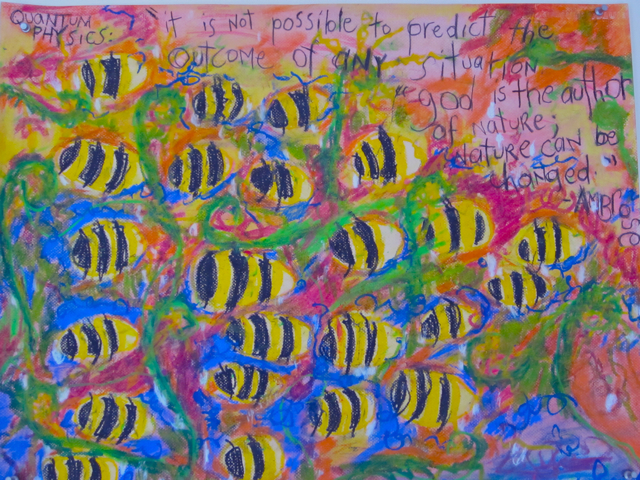

I’ve received a very nice invitation to Easter dinner on Sunday. And I’ve been invited to contribute a fruit salad to the meal. So I’ve been thinking about fruit salads and what makes a good one. I mean, most of them are pretty run-of-the-mill, right, Reader? What on earth can make you excited about a fruit salad?! So you understand my dilemma.
Well, I’ll tell you what can make a special fruit salad…HONEY! And good coconut. And good pecans. And whipped cream. So, my dear Reader, I’ve decided to whip up a wonderfully exuberant Ambrosia. Because Spring is exuberant. And Easter is exuberant. And all the world is exuberant. And the image above is not only exuberant in its colorful Easter-egg-like bees, but embedded in it is a quote from St. Ambrose, the patron saint of bees.
Legend has it that a bee landed on the infant St. Ambrose’s lip; when she flew off, she left a drop of honey on his mouth. When St. Ambrose’s father discovered the honey on his son, he took it as a sign that little Ambrose would grow up to speak gently and smoothly and with a honeyed tongue.
Reader, in this present election season, one in which our attentions have become riveted to hateful speech and vitriol and the power of language to do harm and raise ire, it’s good for us to recall the healing power of speaking gently and with a honeyed tongue. So St. Ambrose is my man this Easter. Therefore, dear Reader, I shall be making Ambrosia, a fruit salad named after our sweet-talking saint—a fruit salad with just a touch of honey…honey collected from my own bees.
Thanks to Francesca, the young artist who created this very exuberant pastel.
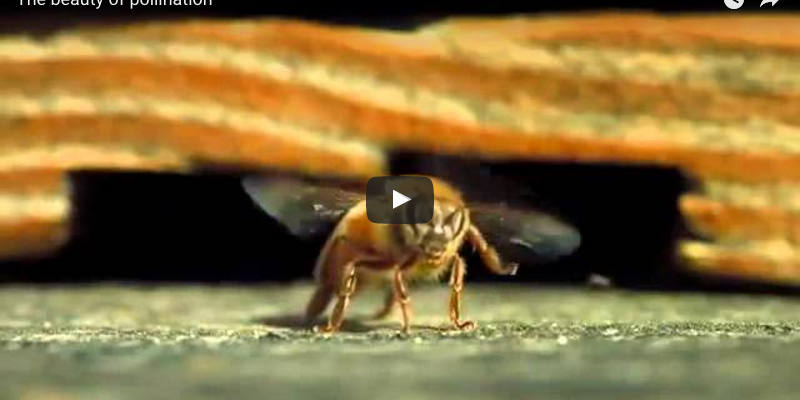
My Aunt Chris sent this video my way. She has one of the liveliest backyards ever…full of blooms and wonder. I’ve always loved thinking of her out puttering in her greenhouse and her gardens. It’s a trait shared by my mother, her sister—a trait inherited directly from their father. And although I consider myself late to the party, I can say that this dormant green-thumb obsession has now blossomed in me, too.
In the video, please note that the common denominator in all this wonder is flowers. If you plant it and it blooms, they will come.
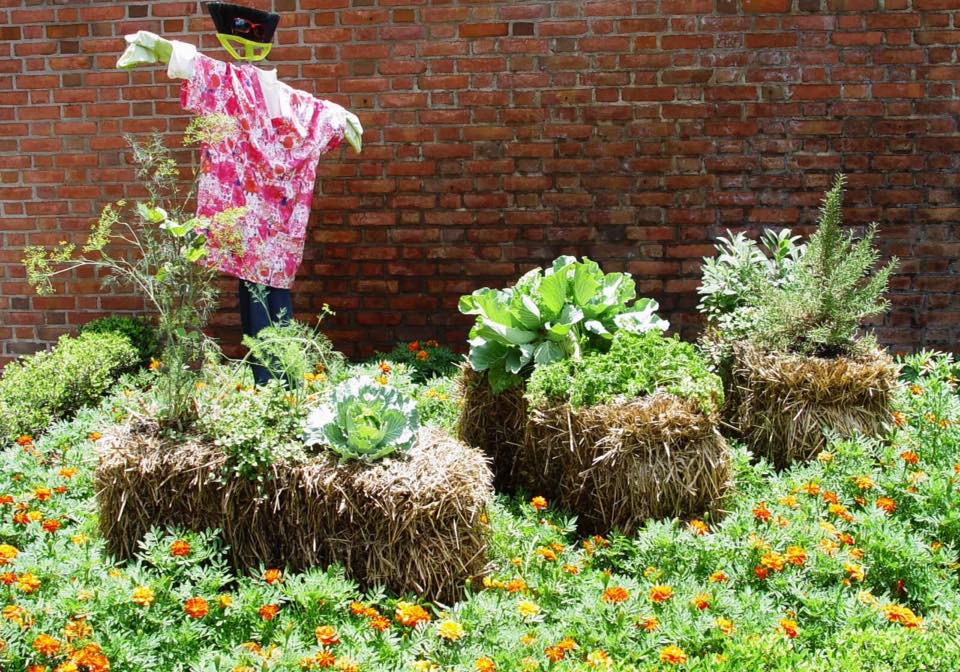
As you know, Reader, bees need flowers. They need flowers because they need both nectar and pollen which are found only in flowers. I could go on and on about why they need nectar and why they need pollen, but I’ll save that for another post.
I’m often asked what people can do for the bees and other pollinators, and this is my answer: Plant wildflowers. Please, friends, allow wildness. That’s the answer. Let’s not try to control every inch of our lives. Let’s not mow every dandelion and violet and clover. I am forever encouraging my friends to allow a part of their yards and their lives to go freaking ape crazy extravagantly loose. (I wanted to throw in some curse words there, but I resisted. So far.)
But it’s not easy to change, is it? It’s not easy to dig up some part of our yards and introduce wild things. Which is why I love this idea of Straw Bale Gardening (SBG). This SBG approach doesn’t require a complete overhaul of our yards. It’s not permanent. We can sneak these bales into odd little areas of our yards or on our properties and fill them with things that are not only good for pollinators but that are also good for us. (By the way, if something is good for pollinators, Reader, it’s also good for us. That’s a good thing to keep in mind.)
We can produce vegetables and flowers in places we’d never before considered viable. Which will give us good things to look at and good things to eat. It will also bring the wild things. Which will make us happier.
I’ll be hauling some bales into my yard soon. Then I’m gonna plant vegetables and flowers in it.
Before I leave you, here’s the book I’m using to guide me:
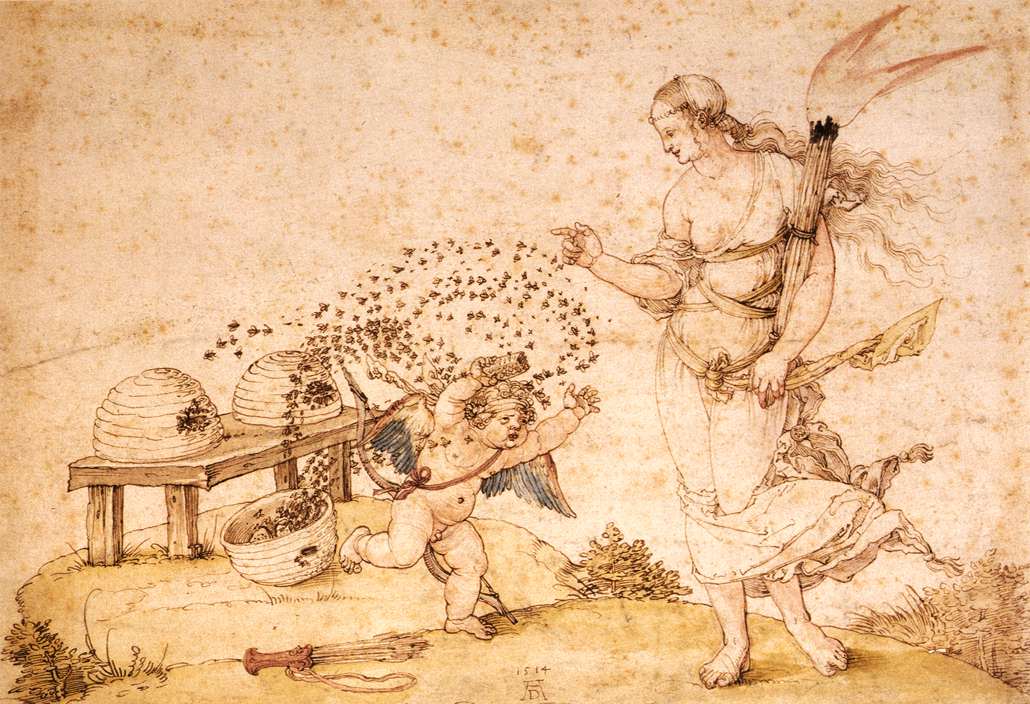
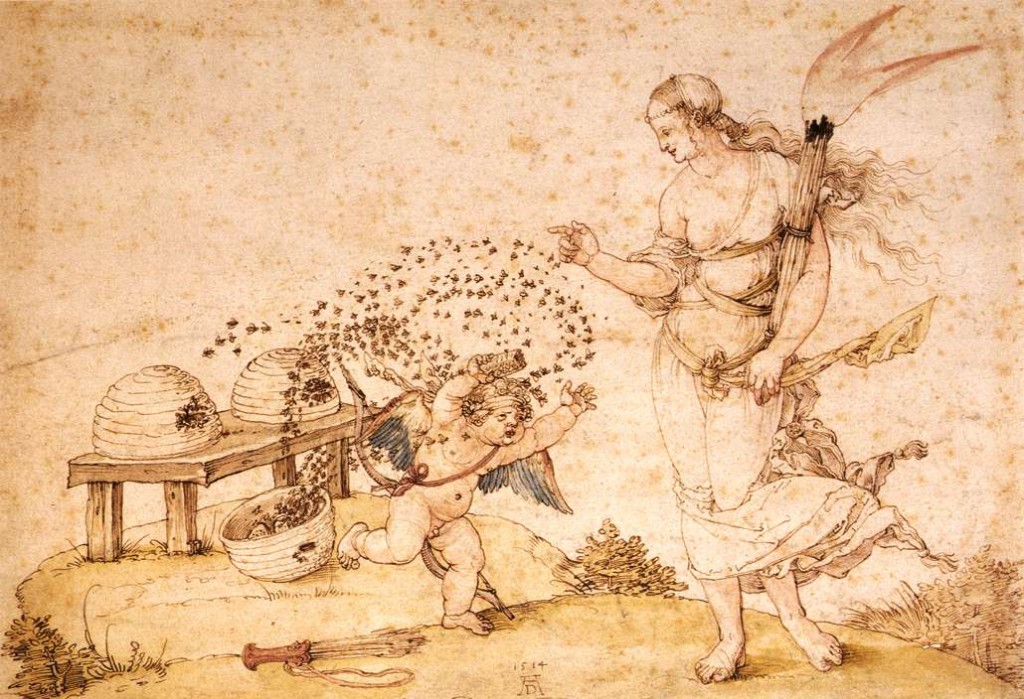
I love that, no matter what, Cupid WILL NOT let go of the honey here. :) And that’s Cupid’s unflappable mother, Venus, with him. As you can see, the calmer the person, the calmer the bees. It’s a good reminder not to run flailing around when things get tense in the bee yard. Be like Venus, friends. Though I have to say that I can certainly relate to Cupid. Something similar once happened to me. Years ago, I failed to use my smoker when I opened a hive…I thought I could quickly slip in there without notice. And in the midst of some angry bees on my unveiled face, I swatted my eyeglasses into the bushes near the beehives. I still haven’t found them.
I’ll also admit that after I slung my glasses into the woods, I ripped off my shirt and swatted it wildly around my head as I attempted to outrun the bees. It was an ugly event.
I do, however, love the reminder that if bees didn’t sting, it would be like keeping a box full of flies…and what on earth fun is that?!
Dear Reader, no doubt you know by now—now that you are where you are in your life—that there is no sweetness without pain. Happy Valentine’s Day.
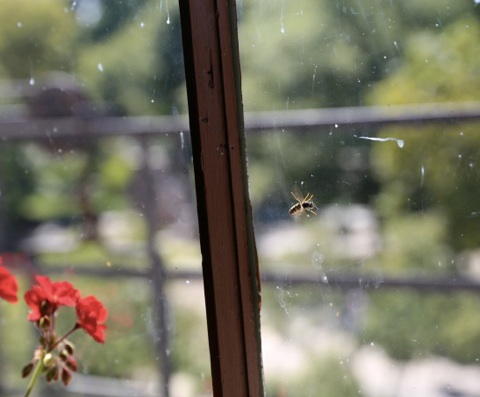
Catherine Comello Stehlin has died. Some people are simply forces of nature, and when they leave us, they leave gaping holes. That’s the way I feel about Catherine, and I didn’t even know her that well. I wish I had. I loved her from the moment I first spoke with her on the phone, and I grew to love her more through several conversations and by watching her spirit-filled life on Facebook. I won’t go on and on, but I am not usually this crazy about people.
They say that when someone important to us dies, we should tell the bees. Which I have done. They need to know about the shifts in our world.
Anyway, several years ago, photojournalist Emily Maxwell spent some time with a few local beekeepers documenting the plight of the bees and urban beekeepers. Emily recorded Catherine’s voice, and I like hearing it. To hear it for yourself, click on this link and then watch the slideshow titled “The Rise of CCD and Urban Beekeeping in Cincinnati.” There, at about the half-way point, you’ll find images of Catherine and her fire-escape bees. And you can hear her voice as she talks about them.
(photo by Emily Maxwell)
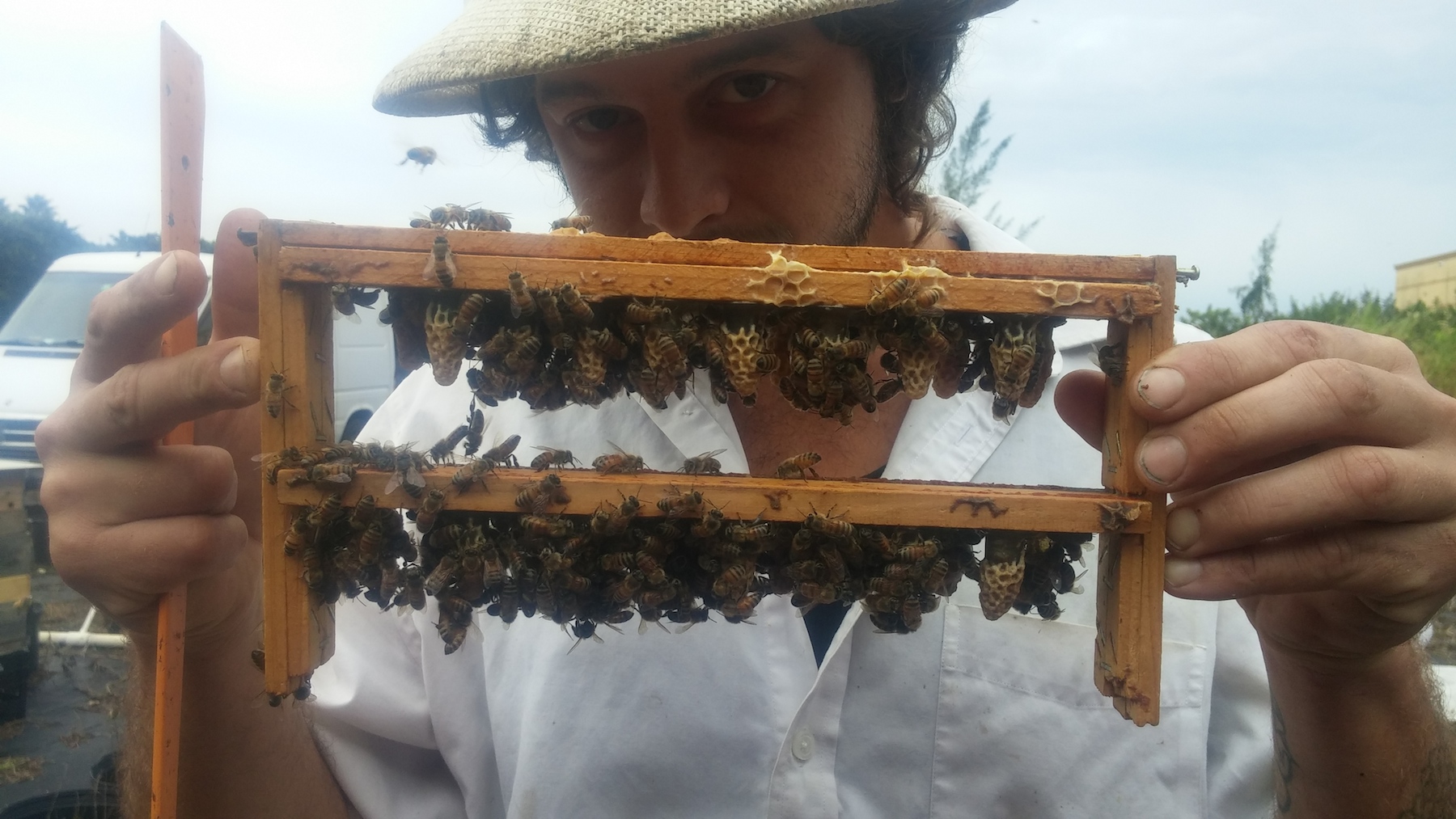
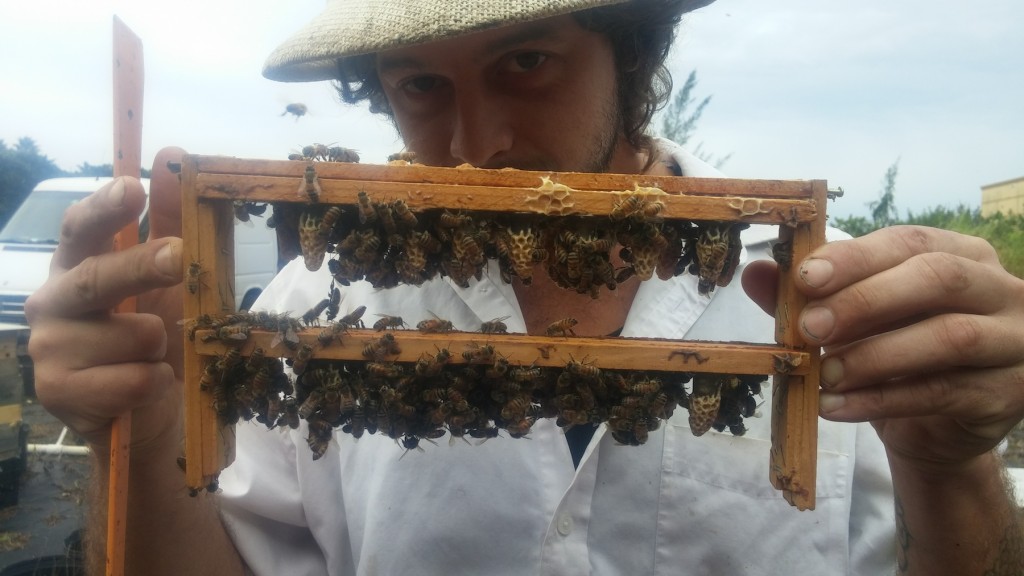
The temperatures these past couple of weeks have given those of us in Ohio an opportunity to check on the bees and to feed sugar candy or honey to those colonies running low on stores. I’ve made a wonderful discovery, Reader: By my calculations (which might be off by a smidgen because my record keeping isn’t perfect), every single hive in which I introduced a queen from Anarchy Apiaries is still living. What a joy to open a hive in which a colony is quietly working toward spring.
Colonies with genetics from my own queens…queens that I started from local surviving stock…are still flying as well. Though I’m not ready to produce quantities of queens, Sam Comfort is. So, if your hive died this winter, I suggest you consider replacing your queens mid summer with those from Anarchy Apiaries.
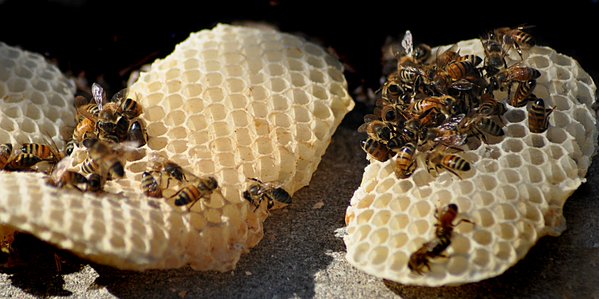
Okay, friends. I’m just gonna post this little WKRC video about the bees at the zoo farm right here. But I cringe when I see it. Because I must have been hyped up on adrenaline when the news people came around. I hate to think I really talk this fast and that I sometimes sound so know-it-ally. I don’t know what it is about the presence of a video camera that makes us act differently. And I don’t know what it is that makes me feel as if I need to have all the right answers when journalists ask their wonderful questions. I prefer humility. I don’t mind self confidence, but I dislike sounding as if I am certain of every single thing.
I’ve decided to speak more slowly. And to take that extra moment to think before I speak. And to smile as I think. All of which should make me a more pleasant person to hang with, don’t you think? Sometimes I miss that slight drawl in the conversations of my native Texans. Because there’s a certain casualness to it. A drawl makes you feel as if not everything is an emergency. And it’s usually drawled out with a slight smile as if to say, everything will be all right.
